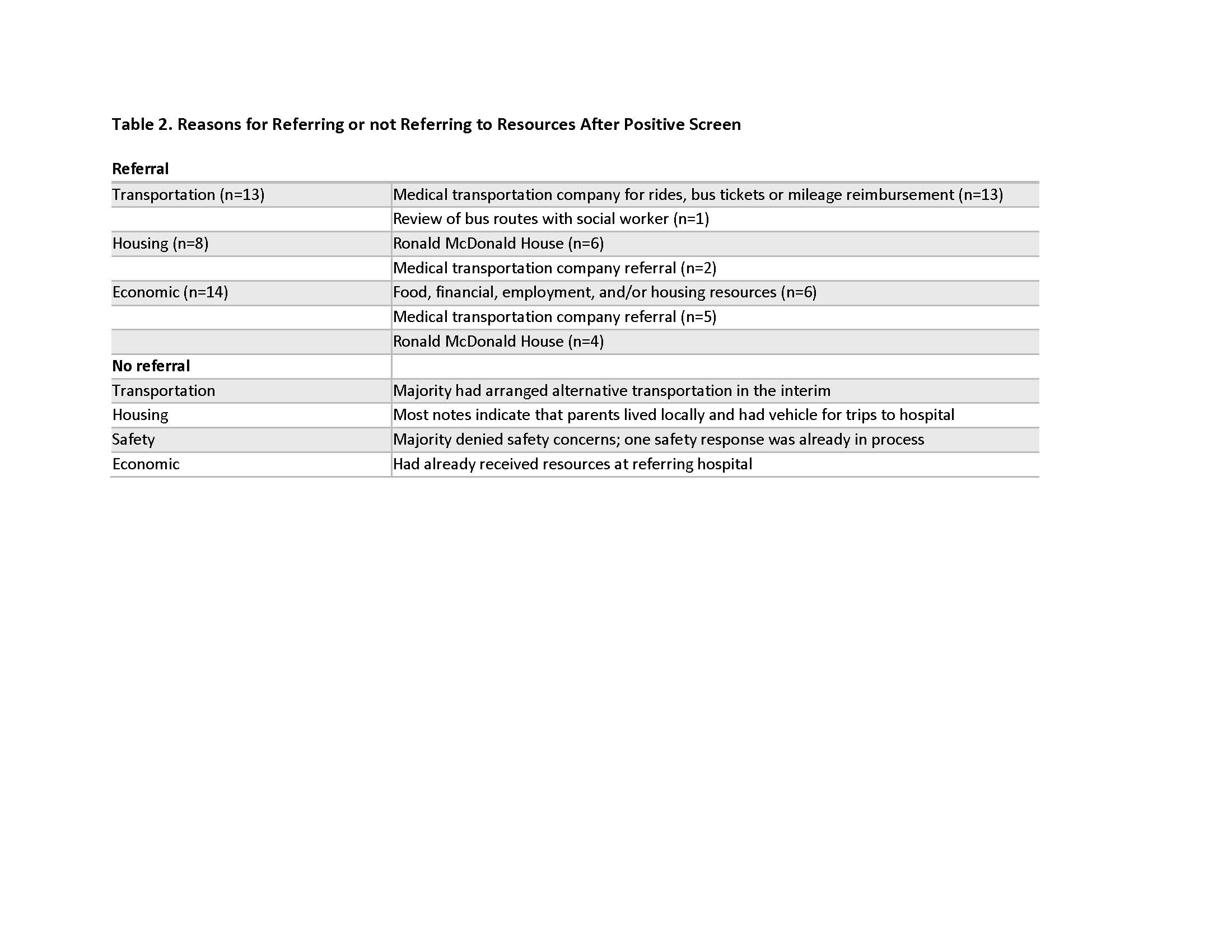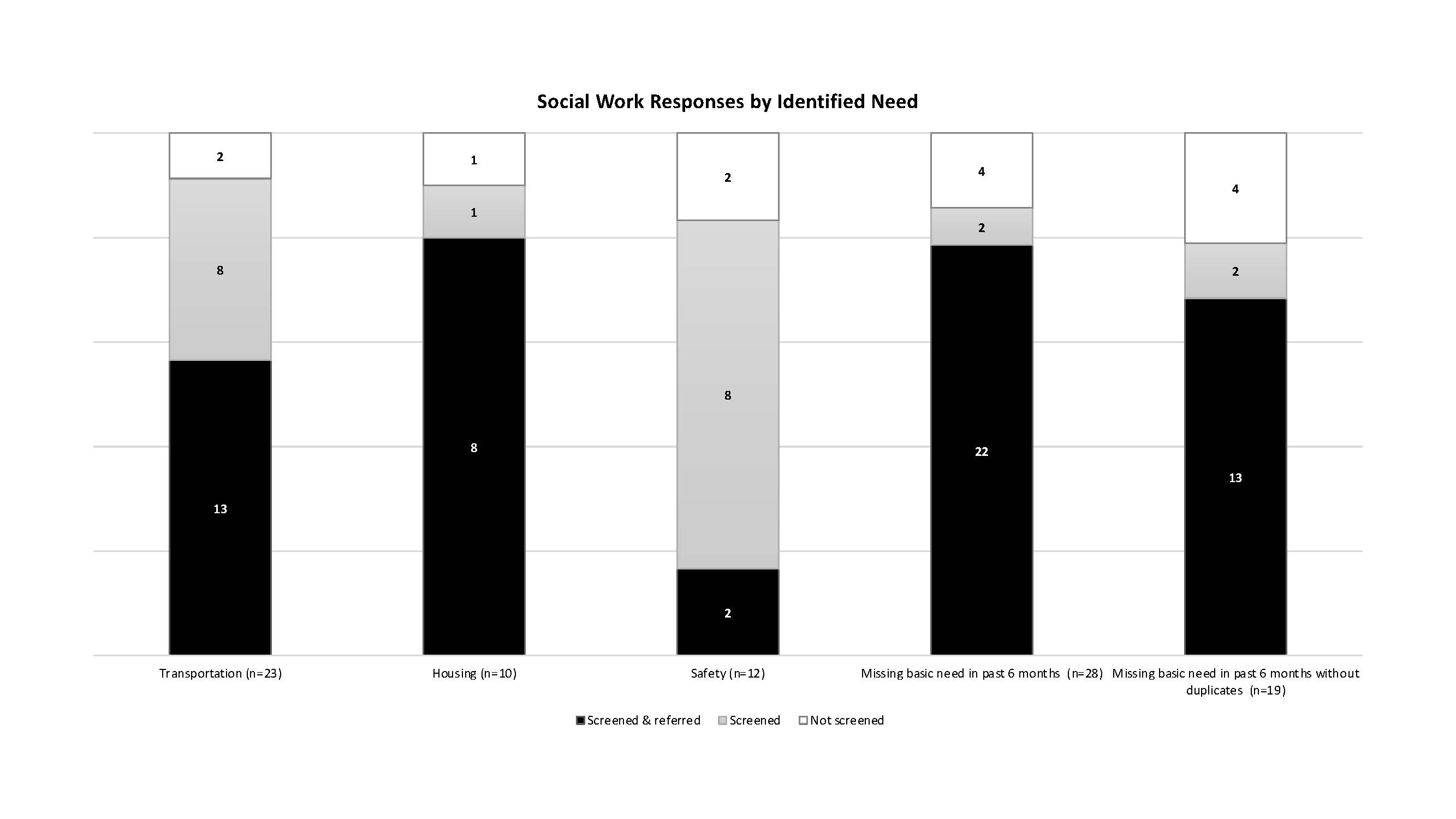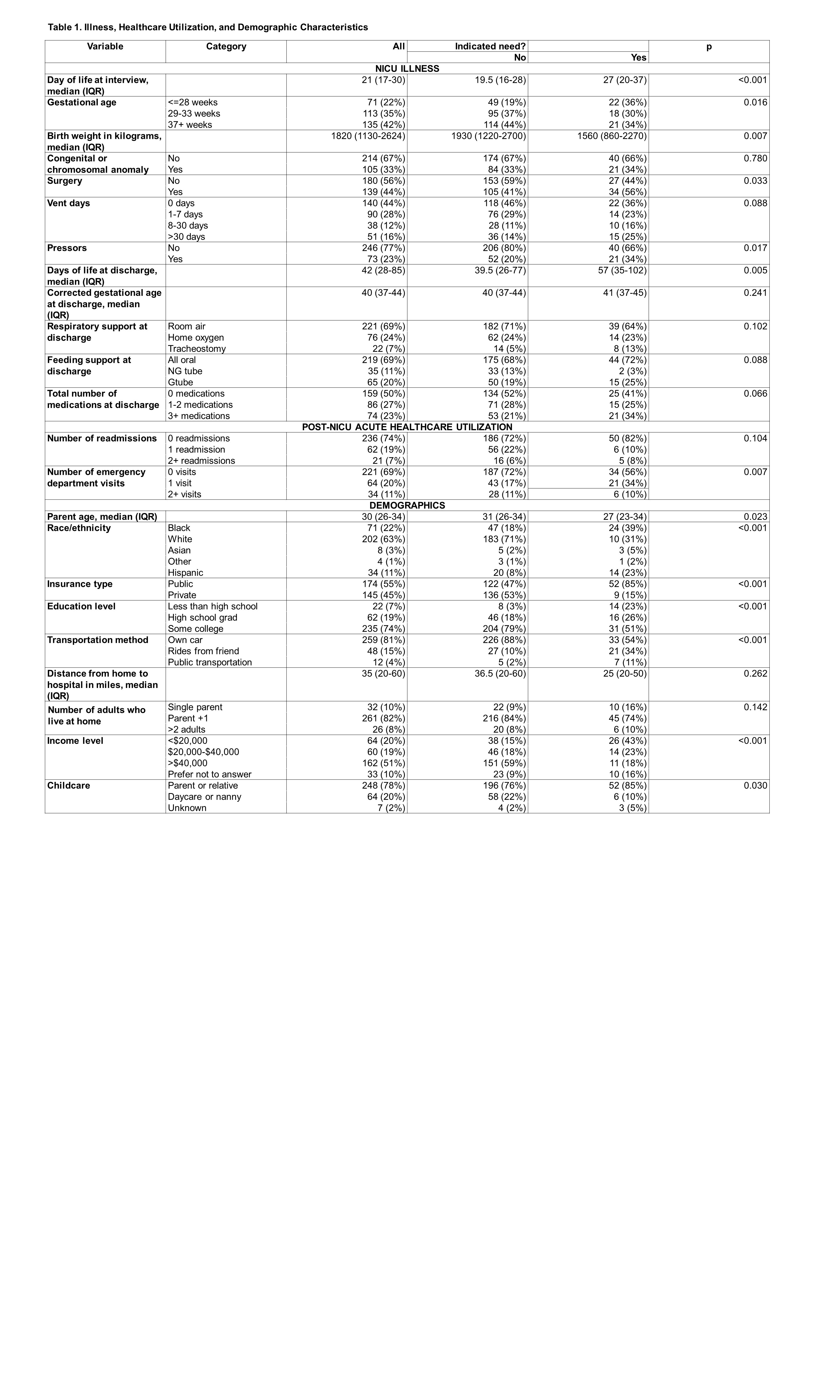Neonatology
Session: Neonatal-Perinatal Health Care Delivery: Practices and Procedures 2
459 - Impacts of systematic screening for social determinants of health in a level IV neonatal intensive care unit
Monday, May 6, 2024
9:30 AM - 11:30 AM ET
Poster Number: 459
Publication Number: 459.2748
Publication Number: 459.2748
- CH
Caitlin K. Hoffman (she/her/hers)
MD MPH Student
Medical College of Wisconsin
Milwaukee, Wisconsin, United States
Presenting Author(s)
Background: Social determinants of health (SDOH) are associated with preterm birth and its complications. Infants in the neonatal intensive care unit (NICU) and their families are a high-risk group in need of supports including focus on SDOH. Systematic SDOH screening is increasingly recognized as a strategy to improve health of children in outpatient settings; however, it is not as common in NICUs, in part due to the presence of social workers and other professionals. It is not understood how systematic SDOH screening in a NICU could identify additional needs in this setting.
Objective: To determine whether systematic screening for SDOH in a level IV NICU could uncover family needs in addition to existing social work and psychologist support.
Design/Methods: Secondary analysis of a single center prospective study in a level IV 70-bed NICU, including parents of infants admitted to the NICU for >2 weeks. Participants filled out the PRAPARE tool, which includes screening questions regarding food, housing and transportation security, and safety. Questionnaires were completed via tablet into a secure database which was not part of the medical record. If needs such as housing or transportation were flagged, the research team notified social work. Illness and demographic characteristics were compared between families who did and did not identify resource needs. Manual chart review assessed what had been done to address SDOH needs before and after the questionnaire. Responses were categorized: need addressed before screen, no social work encounter until referral made upon screening, repeat referral after social work meeting, and no response documented before or after screen.
Results: Of 339 respondents, 51 (16%) identified at least one resource need. Illness and demographic characteristics are reported (Table 1). Of those reporting a need, 23 identified transportation needs, 10 housing, 12 safety, and 28 other economic needs. Of identified needs, 88% (64/73) received either a screen or screen plus referral to resources; 48% (35/73) of needs were screened for upon completion of the screening tool and had not been addressed at the initial social work meeting (Table 2a). For each type of need, referrals and resources were categorized (Table 2b).
Conclusion(s): Systematic SDOH screening can identify needs throughout the NICU stay, even among families connected to social work who have previously received support. Incorporating SDOH screening in NICUs offers an opportunity to reduce barriers to care for families during and after NICU discharge.



